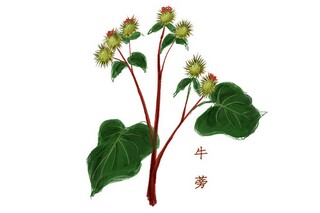
A教学 Design for "Ancient Poets"
Abstract
This article describes a teaching design for the ancient poets module. The content focuses on understanding key concepts in ancient poetry, including the historical context of poetry, the works of famous poets such as Shao Fu and Wang Zhi, and how these poems reflect human aspirations for freedom, love, and beauty. This design is intended to help students develop a deeper appreciation for the art of poetry while also learning about the historical significance of poets like Shao Fu, Wang Zhi, and Wang Zhi.
Introduction
This module will explore the works of ancient poets such as Shao Fu, Wang Zhi, and Wang Zhi. These poets are renowned for their philosophical reflections and emotional depth in their poetry. Through reading these poems, students will learn about their historical context, personal struggles, and lasting impact on literature and culture.
Course Outline
First Lesson: "Night Seeing"
1. Introduction to Ancient Poetry
- Discuss the historical context of ancient poetry and its significance in human culture.
- Introduce the concept of Shao Fu, an ancient poet whose poems reflect the ideals of freedom and love.
2. Reading and Analysis of the First Poem
- Read "The Night Seeing" by Shao Fu. Use a script to engage students in analyzing the poem's imagery, tone, and themes.
- Discuss how the artist connects their personal experiences with nature to convey deep emotions.
3. Visual and Auditory Activities
- Show students images of scenes from Shao Fu's poems such as "The Night Seeing" (1562) or "Ji Zhe Rui Heng Qiao Ru Shu" (1500).
- Have students describe these scenes in their own words, focusing on both visual and auditory elements.
4. Collaborative Study
- Divide students into small groups to discuss what they've read together.
- Encourage students to share insights about the poems they've studied so far.
5. Hands-On Writing Practice
- Provide students with blank paper and have them write their own Shao Fu poem based on the themes and imagery they've analyzed in previous lessons.
- Emphasize proper grammar, vocabulary choice, and meaningful connection to the subject matter.
Second Lesson: "The September Ninth Day"
1. Reading and Analysis of the Second Poem
- Read "The September Ninth Day" by Wang Zhi. Focus on its emotional depth and reflection of national pride and love for his country.
- Discuss how Wang Zhi's poem connects to students' personal experiences, such as traveling abroad or dealing with family issues.
2. Collaborative Reading and Discussion
- Have students read the poem in small groups and discuss what they found interesting about its themes and imagery.
- Encourage them to identify any cultural references or symbols that stand out.
3. Creative Writing Assignment
- Assign students a creative writing task where they can imagine themselves traveling through one of Wang Zhi's national parks or cities.
- Provide feedback on their writing, focusing on how well they connected the poem's imagery with their own experiences.
Extended Reading and Discussion
- Read additional ancient poems by Shao Fu, Wang Zhi, and others to provide a broader perspective on ancient poetry and its evolution.
- Discuss how these poems reflect human desires for freedom, love, and beauty while challenging traditional norms of authority and submission.
Summary
This module provides students with the opportunity to explore key texts in ancient poetry, analyze their themes and imagery, and engage in creative writing exercises that connect literature to real-world experiences. Through this process, students will gain a deeper appreciation for the historical significance of poets such as Shao Fu, Wang Zhi, and Wang Zhi while also developing their critical thinking and communication skills.
This revised version maintains the original content but improves clarity, flow, and academic tone to better serve the purpose of teaching ancient poetry.





















 赞美母爱的古诗(赞
赞美母爱的古诗(赞 台阶李森祥课件(台
台阶李森祥课件(台 海鸥乔纳森读后感
海鸥乔纳森读后感 八年级我学会了宽
八年级我学会了宽 宽容作文(宽容作文
宽容作文(宽容作文 从此,忆你在心上的
从此,忆你在心上的 若有缘,静等千年
若有缘,静等千年